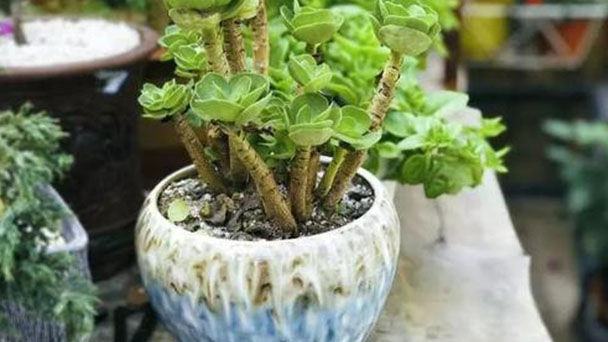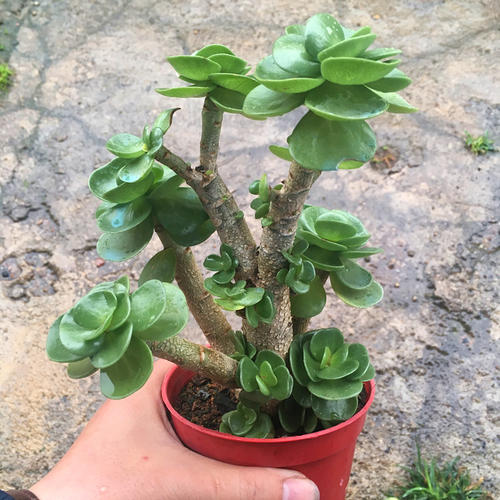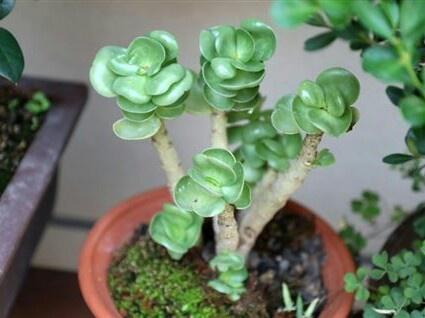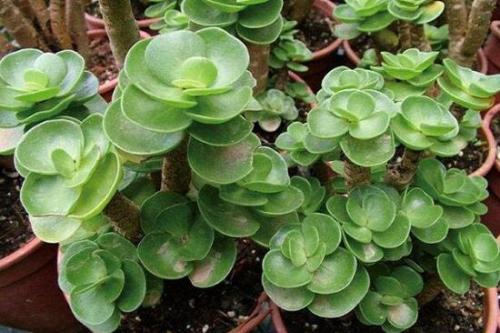How to Propagate Portulaca Molokiniensis
Written by Maggie
Nov 10 2021

As a common indoor leaf-viewing plant, Portulaca molokiniensis has high ornamental value and is often used in indoor potted plants. People use it to decorate homes and improve the environment. However, if we want to properly grow Portulaca molokiniensis, we must understand its propagation method. How to propagate Portulaca molokiniensis? The main propagation methods of Portulaca molokiniensis include division and cutting propagation.

Portulaca Molokiniensis Propagation from Division
The division propagation of Portulaca molokiniensis was applied in spring. The specific steps were as follows: First, the larger portulaca molokiniensis was removed from the pot and shook out the soil, separated at the weak joint of tubers, and then coated with sulfur powder or plant ash and planted in a pot. It is important not to bury the tubers too deep. The tubers should be 1.5-2cm below. In addition, because the wood tuber of Portulaca molokiniensis has latent buds, the large tubers can be divided into small pieces with latent buds, buried in wet sand until the wound has healed, and then planted in a pot when the small tubers stand on their own.

Portulaca Molokiniensis Propagation from Cutting
For Portulaca molokiniensis cutting propagation, it is better to choose the blade with axial blade, so as to achieve a high survival rate and fast growth rate. For cutting propagation matrix, we can choose general sand or peat, perlite, river sand by 3:1:1 mixture ratio, cutting the soil into a third or half of cuttings, substrates to only have a leaf, and then placed in the shade after spraying water, maintain appropriate at room temperature, regularly spray leaves every day, keep the soil moist but not too wet, otherwise it will cause the decay of cuttings were failure. In addition, it should be noted that when a certain root system was formed, the middle of the root expanded to form small tubers and gradually increased. Some cuttings would die of yellow and withered due to improper management, but tubers could survive, and old ripe leaves and petiole cuttings could add vitality.

Latest Updated
- Benefits of Bugleweed - 7 Science-backed Health Benefits
- Bugleweed Dangers & Side Effects - Is It Poisonous?
- How to Plant Evergreen Trees - What You Should Know
- When to Plant Evergreens - Grow Guide for Evergreen Trees
- 12 Wonderful Evergreen Shrubs for Your Garden
- 12 Popular Evergreen Plants with Pictures for Beginners
- When And How To Prune A Lilac Bush Like a Pro
- How to Grow & Care for Lilac Vine (Hardenbergia Violacea)
- Japanese Lilac Tree (Syringa Reticulata) Care & Propagation Guide
- Shumard Oak Pros and Cons - What to Know
Popular Articles
- Winter maintenance of Antirrhinum Majus
- How to Grow Terminalia Mantaly Tree
- How to Grow and Care for Crossostephium Chinense
- How to grow Antirrhinum Majus in spring
- Peristeria Elata (Dove Orchid) Profile: Info & Care Guide
- Underwatered Snake Plant (Sansevieria Trifasciata) - Signs And How To Fix
- How to Care for Brazilian Jasmine Plant (Mandevilla Sanderi)
- How to Grow & Care for Graptopetalum Purple Delight in Summer
- Rosa Chinensis (China Rose): Plant Growing & Care Tips
- How to Care for Baby Sun Rose (Aptenia Cordifolia)